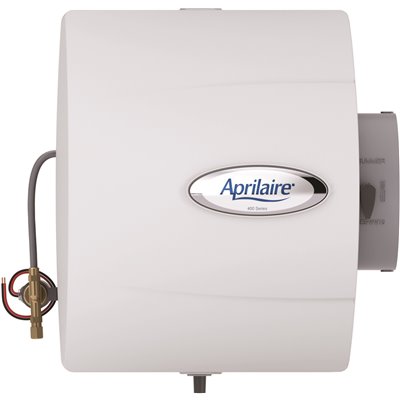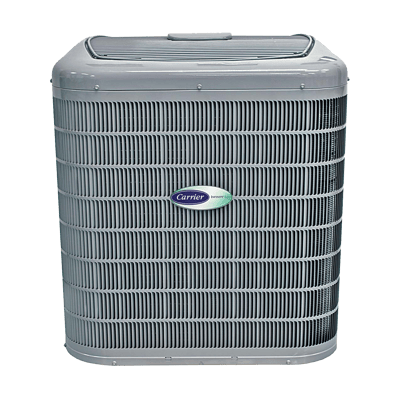The CRS Blog
Summer Home Maintenance Professional Tips
As the days grow longer & hotter, there are some key things you need to keep in mind in order to best care for your home. Strap in, as we dive deep into the 10 things every homeowner should do to keep their property functioning at its very best this summer!
10 tips for summer home maintenance
While your honey-do list may not be a top priority, taking care of these crucial items each year can prevent so much trouble in the long run. These tips will help save you from unplanned expenses while ensuring that your home's investment is secure.
1. Rotate & clean the ceiling fans
In the excessive summer heat, you're likely to use your fans on a daily basis. Keep the air in your home fresh by dusting those based really well before they spread dander & dust inside your home. Be on the lookout for bent blades, excessive wobbling, or a damaged motor while you're swiftering away. Most importantly, remember to switch your fans to a counterclockwise rotation so that cool air will be pushed towards the floor for cooler temperatures in the room. Make sure the fan is off before doing so. Why should you do this? The reversed motion of the blades will force the air in the room downwards to create a cooling effect.
2. Change the AC filter
In summer, your air conditioning system may be in use more than often. Not changing your air filter regularly can create issues that prevent your AC unit from functioning properly and affect the unit's longevity. Prolong the life of your unit by doing this maintenance at least once every 3 months, but ideally more often if you have pets. If you want to spice things up a bit, you can even add some essential oils to the filter to create a pleasant smell in the air while the AC is running!
3. Clean vents and air ducts
Keeping vents and ducts cleaned especially during summer will help improve indoor air quality and as an added bonus, help save energy resulting in lower bills(Wahoo)! Most importantly, keeping the air ducts clean helps extend the life of your furnace and AC.
Here are some tips to clean your vents and air ducts:
- Check inside the vents for dirt, dust, or debris
- Clean air registers to remove dust buildup
- Take off the air duct covers and thoroughly clean the grates with a brush or vacuum
- Don't forget to do the same with vents on the ceiling!
When all else fails, plenty of companies will provide services for a nominal fee to save you the hassle of doing it yourself!
4. Drain the water heater
You can do this yourself with very little time and just a few basic tools. To start you'll need a garden hose and a flat-head screwdriver.
- First, turn off the water supply valve at the top of the water heater
- Then, turn off the water heater
- To do so, turn the thermostat to the "pilot" setting (if the water heater is gas) or shut off the power at the breaker box (if it is electric)
- Note: Electric water heaters must be turned off completely during flushing. Exposed heating elements can burn out quickly if the water level in the tank drops below the level of the hot elements
- Near the bottom of the tank, find the tank drain valve and attach a standard garden hose to the drain valve
- Open a hot water tap nearest to the water heater, preferably on the floor above
- Open the drain valve and allow the water to drain from the tank
- Again, the water will be hot! So use caution!
- Once all water has drained from the tank, briefly turn on the cold water supply to the tank
- Repeat this process until the water runs clear
- Close the drain valve, remove the hose and turn on the cold water supply
- The tank will begin to fill
- Go back to the hot water tap that you opened earlier. Once cold water begins to flow from the tap, turn it off
- Turn the gas valve back on from the pilot position or turn the electricity back on to the tank
- Be sure to check the valve opening once it's closed to ensure there are no water leaks
5. Switch the humidifier into the summer position
Failing to do this before the summer starts can lead to poor airflow in your air conditioner which will draw the cool air back over your cooling coils and cause the system to freeze up. Try setting a reminder for yourself in late spring every year to avoid this issue. Humidifiers aren't in every home, but when they are there they are easy to find. Typically they are located near or on the furnace or vents in the utility closet of your home. They should look something like this: 
6. Have the AC serviced
A broken air conditioner might be the worst thing that could ever happen on a hot, summer day. For some, losing air can be a deadly threat! Remember to hire professionals to annually inspect and maintain your air conditioner to avoid losing cool air when the temperatures start to spike. In addition, there are some things you can do yourself to ensure your AC stays in working order. If you're not certain where your AC unit is, most often it is the outside of the home and looks like the photo below. One thing you can do is keep vines, sticks, and bird nests off of the AC Unit. It's also best to clean the AC coils regularly (at minimum once a month) using a hose to wash away pollen, seeds, dirt, and other debris.

7. Inspect siding
Siding is one of the most important features of any home, as it protects the framing of the home from the elements like weather damage, pest damage, and more. Inspect your home’s siding for any damage regularly - but especially now that spring rains have passed- and conduct the necessary repairs or cleaning. Some things to look for might include siding, facia, or soffit pulling away from the home, creating a gap, or holes in the siding where future problems can occur. A basic rule of thumb would be that if the siding isn't properly covering the structure, you should get it addressed right away!
8. Inspect fencing
Just like siding, fencing can suffer in the spring and summer months. Things like tree fall, hail, or damage from wildlife can do a number on your fencing. Especially for those with wood or chain link fencing, conduct regular repairs may be needed to avoid replacing the fence as a whole. Now would be a great time to power wash as well!
9. Clean the gutters
One of the leading and most preventable causes of expensive foundation issues is improper drainage and regular gutter blockage!
Rainwater may not drain properly when gutters and downspouts are blocked with dirt and debris. A small chore can lead to many serious issues to both the interior and exterior of your home as water overflows from gutters. Consult with a professional to see whether you need to replace your gutter system if you notice a good deal of damage during your inspection.
Otherwise cleaning is simple. Use a broom, leafblower, hose, or even a nice pointy stick while up on the roof to clear the waterways. Getting gutter guards is a cheap and easy way to keep gutters clear longer, but you will still need to check them at a minimum twice a year.
10. Pressure wash
Do this maintenance to your driveway, deck, sidewalk, porch, and siding. This doesn't just improve the overall aesthetic of your home, but power washing will remove dirt, mildew, and mold, especially in shaded areas. If you haven't done this before, you'll be amazed at the difference it can make!
